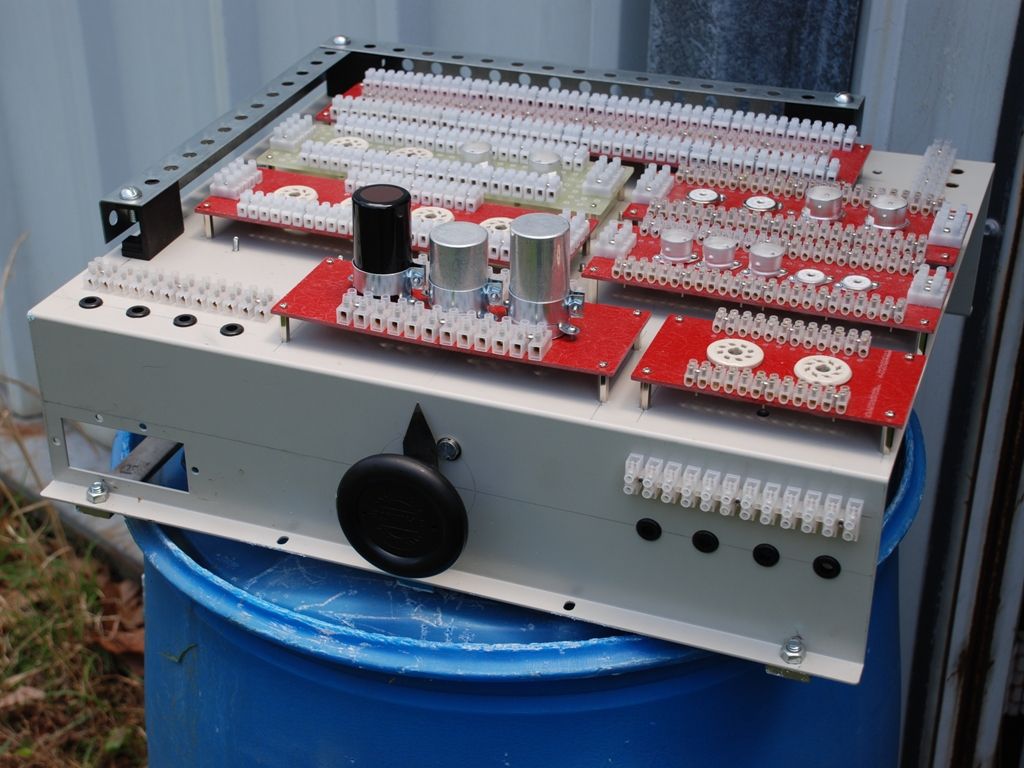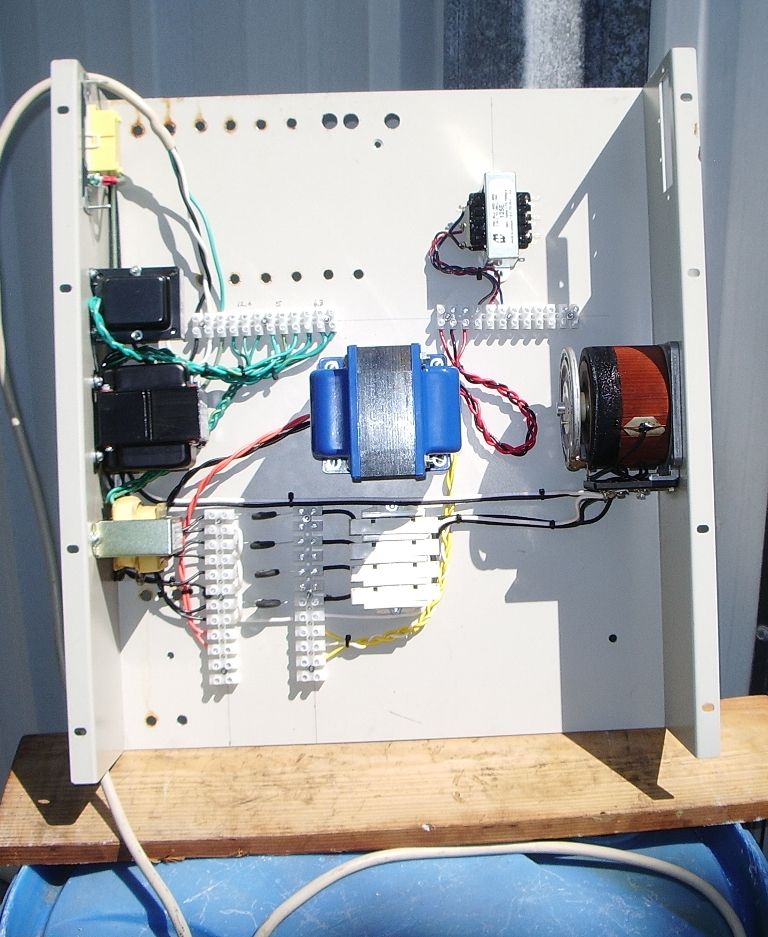I'm going to be doing a bit of troubleshooting on my Oliver PA-100X, today (Sat). Before I get into lifting components to take measurements, I would love to know the math that goes into getting the results needed.
My actual voltages are:
418vAC - to the 100K resistor (R1)
-37vDC - after the diode (at it's junction with R3)
Simple voltage dividers, I understand: Vout = Vin x R2 / (R1 + R2). But, I'm missing something on how the 47K (R3?) comes into play after the diode, to get the -50vDC.
My Ampeg B-12-XY has the same bias supply, except R3 is a 34K. I made a voltage chart for that one, and will do the same with this one, when I've ironed out the issues. The XY has 417vAC in and -52vDC out.
If someone would please do me a favor and demostrate the math for this circuit, I would greatly appreciate it. Math doesn't come easy these days. Thanks for all help. Have a good one.
Jack
My actual voltages are:
418vAC - to the 100K resistor (R1)
-37vDC - after the diode (at it's junction with R3)
Simple voltage dividers, I understand: Vout = Vin x R2 / (R1 + R2). But, I'm missing something on how the 47K (R3?) comes into play after the diode, to get the -50vDC.
My Ampeg B-12-XY has the same bias supply, except R3 is a 34K. I made a voltage chart for that one, and will do the same with this one, when I've ironed out the issues. The XY has 417vAC in and -52vDC out.
If someone would please do me a favor and demostrate the math for this circuit, I would greatly appreciate it. Math doesn't come easy these days. Thanks for all help. Have a good one.
Jack



Comment